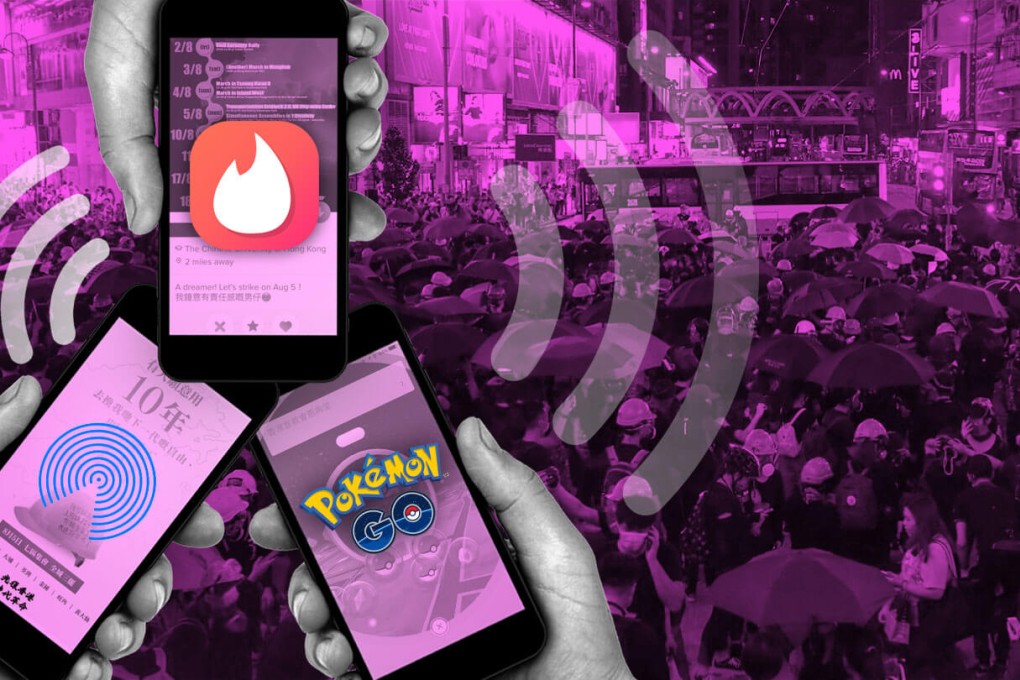Advertisement
How Hong Kong protesters are using Tinder and Pokémon Go
- Protesters are turning to Tinder, Pokémon Go and Apple’s AirDrop to spread messages
- Tech has been at the centre of demonstrations against a controversial extradition bill
Reading Time:2 minutes
Why you can trust SCMP

You might get more than you bargained for when swiping through Tinder in Hong Kong. As the city rolls into its third month of unrest, some are using the popular dating app to invite people out into the streets.
Posting information about protests on Tinder is just one of several creative ways Hongkongers are using tech to mobilise people. For more than eight weeks now, technology has been at the centre of organising demonstrations against a controversial extradition bill.
People primarily communicate through Telegram groups and stream their actions on gaming platform Twitch. As violence has escalated in recent weeks, though, police have been cracking down harder. So now protesters are resorting to more unorthodox methods of organising and communicating online.
One of those methods, apart from Tinder, is Pokémon Go.
Advertisement
When the Hong Kong police denied protesters permission to march in one of the city’s suburban neighbourhoods on safety grounds, the protesters decided to say that they weren’t going for a march – they were just showing up for a game of Pokémon Go.

Advertisement
The march in Yuen Long on July 27 was held in response to violent attacks on protesters a week earlier from more than 100 white-clad assailants, with some of those arrested having links to triad gangs. This protest ended like many others – not with Pokémon, but with violence, tear gas and rubber bullets.
Advertisement
Select Voice
Choose your listening speed
Get through articles 2x faster
1.25x
250 WPM
Slow
Average
Fast
1.25x